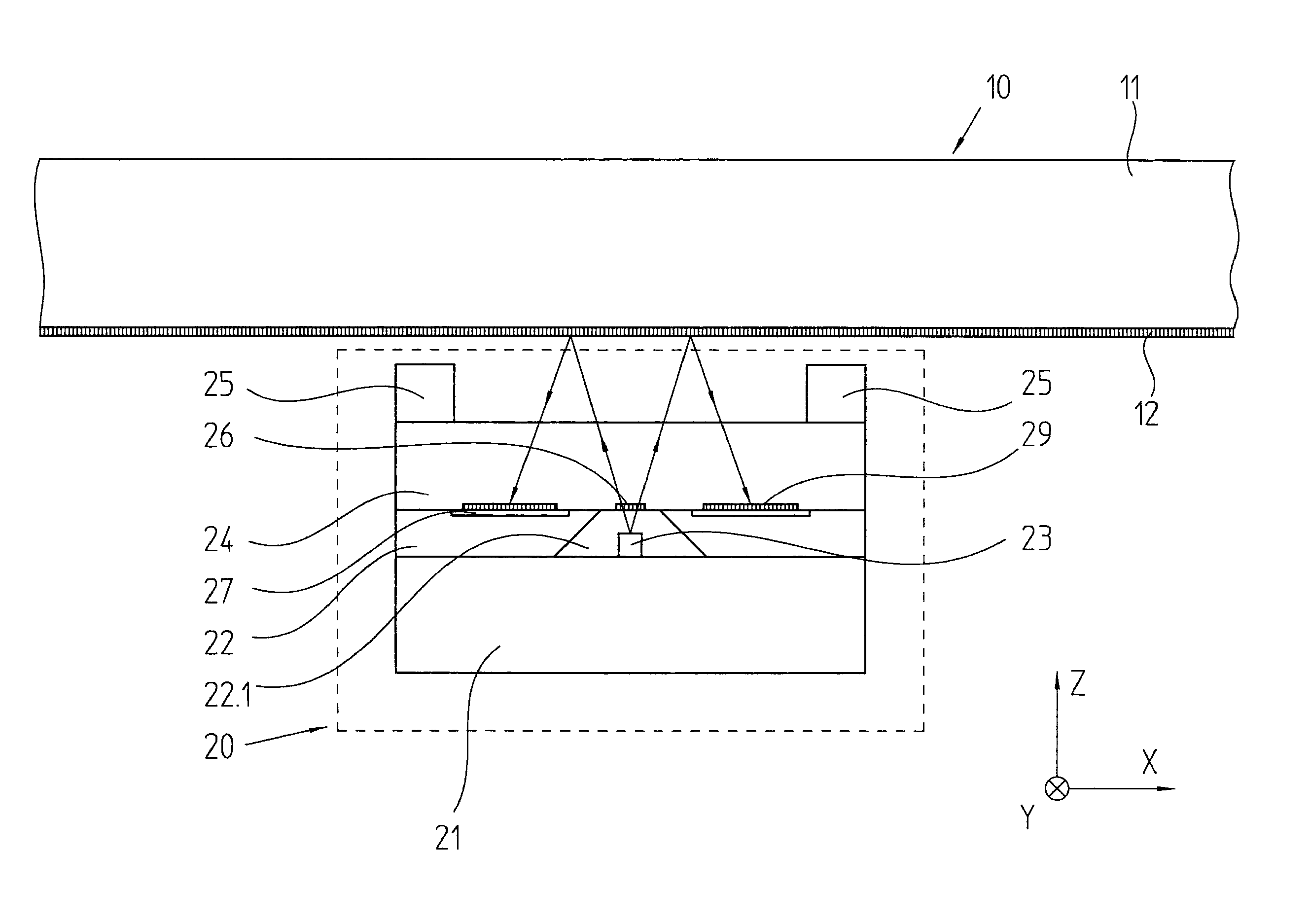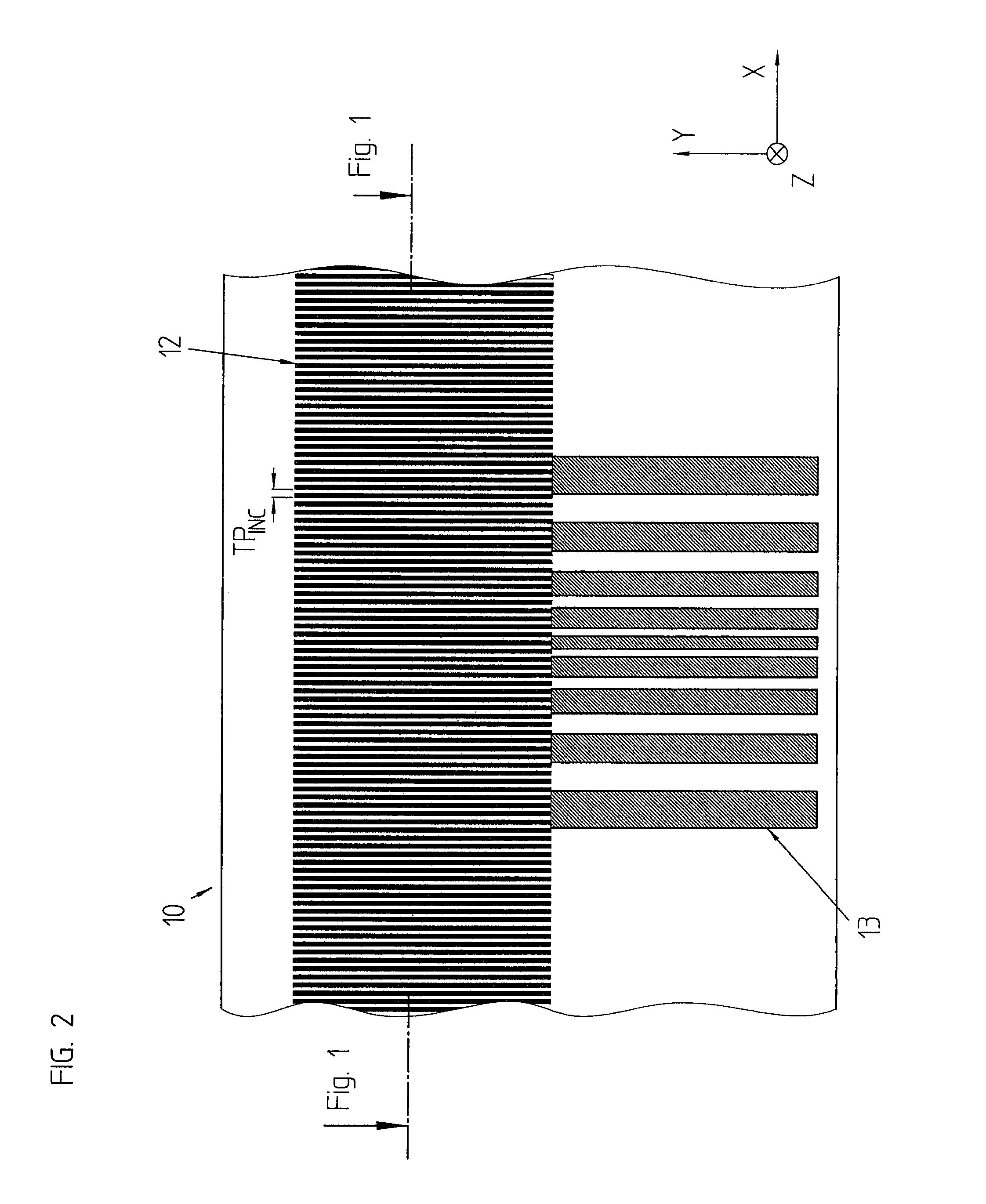Optical position-measuring device
a position-measuring device and optical technology, applied in measurement devices, instruments, converting sensor output, etc., can solve the problems of conventional single-field scanning not being usable for scanning fringe pattern periods below 40 m, and the limits of detector elements,
- Summary
- Abstract
- Description
- Claims
- Application Information
AI Technical Summary
Benefits of technology
Problems solved by technology
Method used
Image
Examples
Embodiment Construction
[0033]FIGS. 1 to 3 schematically illustrate an optical position-measuring device according to an example embodiment of the present invention, the device being configured as a reflective light system. FIG. 1 is a lateral cross-sectional view, FIG. 2 is a plan view of the measuring standard, and FIG. 3 is a plan view of the detection plane in the scanning unit.
[0034]The optical position-measuring device for detecting the position of two objects that are movable relative to each other along at least one measuring direction x includes a measuring standard 10 and a scanning unit 20. Measuring standard 10 and scanning unit 20 are connected to the two objects, which are not shown in the figures. For instance, these objects may be machine components that are movable relative to each other. If the machine components move with respect to each other, the optical position-measuring device generates positional signals, which are processed by a downstream machine control.
[0035]The Figures shows a...
PUM
 Login to View More
Login to View More Abstract
Description
Claims
Application Information
 Login to View More
Login to View More - R&D
- Intellectual Property
- Life Sciences
- Materials
- Tech Scout
- Unparalleled Data Quality
- Higher Quality Content
- 60% Fewer Hallucinations
Browse by: Latest US Patents, China's latest patents, Technical Efficacy Thesaurus, Application Domain, Technology Topic, Popular Technical Reports.
© 2025 PatSnap. All rights reserved.Legal|Privacy policy|Modern Slavery Act Transparency Statement|Sitemap|About US| Contact US: help@patsnap.com



